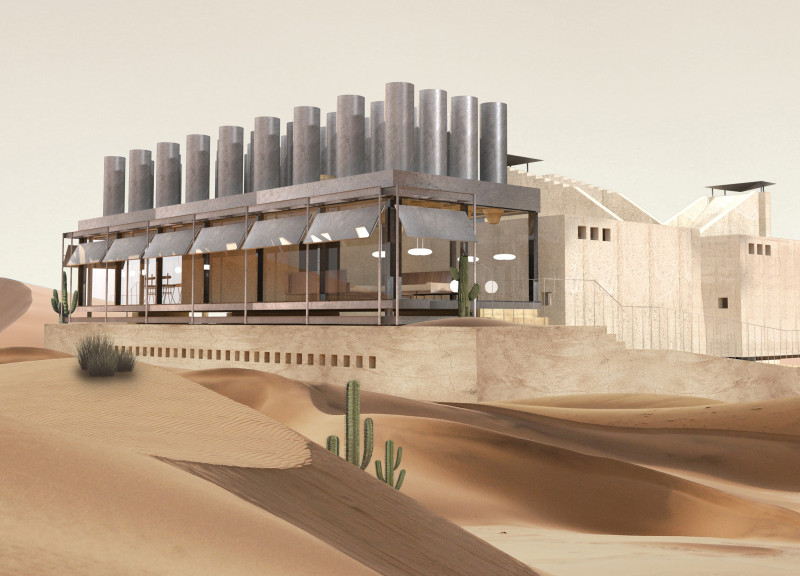5 key facts about this project
A notable characteristic of this project is its innovative use of materials. The structure prominently features reinforced concrete for its durability, paired with large expanses of glass that promote natural light and visibility. The incorporation of steel provides structural support and resilience, allowing for open spaces that foster interaction among occupants. Additionally, the use of timber for cladding elements introduces warmth and texture, creating a contrast with the more industrial materials used throughout the project.
The design encapsulates a seamless integration of indoor and outdoor spaces, allowing for fluid movement throughout the environment. This is achieved through the strategic placement of terraces and green spaces that invite nature into the architecture. The layout promotes a connection between occupants and their surroundings, fostering an environment conducive to collaboration, relaxation, and community engagement.
Unique features of this project include its adaptive reuse strategy, where existing structures were meticulously incorporated into the new design. This approach not only honors the historical context of the area but also minimizes environmental impact by reducing material waste. Moreover, the project emphasizes passive heating and cooling systems, incorporating energy-efficient technologies that contribute to its sustainability goals.
In addition to its environmentally-conscious strategies, this project stands out for its flexible spaces that can be adapted for various functions. The design allows for multipurpose rooms that accommodate diverse events and activities, catering to the evolving needs of the community it serves. The architectural plans include movable partitions that enable quick reconfiguration of spaces, fostering an adaptable environment that can respond to different uses throughout the day.
Aspects such as architectural sections and detailed architectural designs reveal a focus on user-centered planning. The careful consideration of pedestrian flow and accessibility demonstrates a commitment to inclusivity and functional design. This is further reflected in the landscape design, which includes pathways and seating areas encouraging interaction among users, promoting social engagement within the community.
For those interested in understanding the complexities and nuances of this project, further exploration of the architectural plans, sections, and design elements is encouraged. A deeper dive into these aspects will provide valuable insights into the architectural ideas and methodologies that defined this project, showcasing the thoughtful integration of form and function.


























